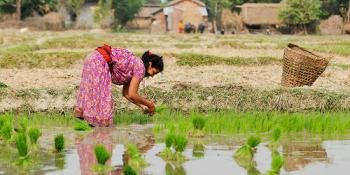Big facts: Focus on South Asia
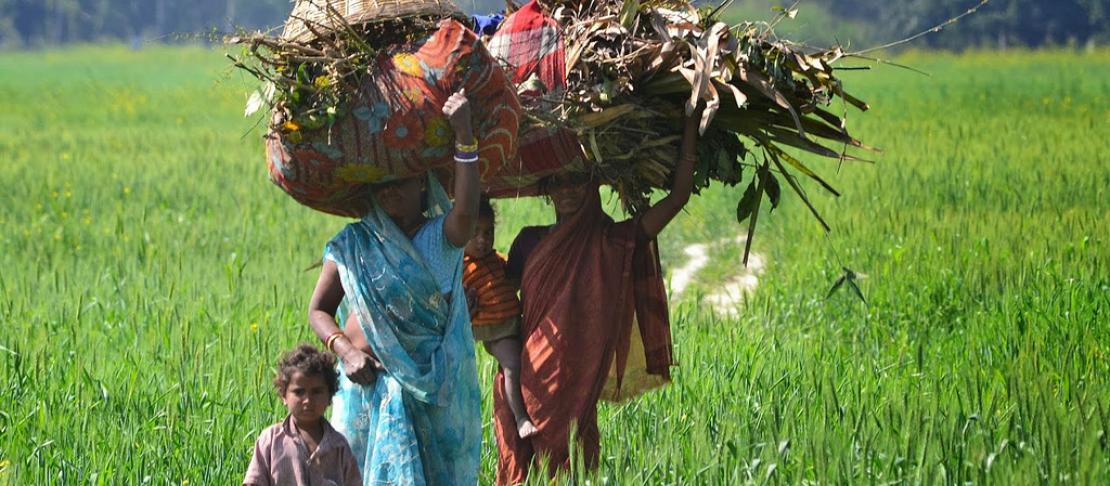
This story spotlights some of the Big Facts on South Asia, and is part of a special blog series to complement the new Big Facts infographics website.
Consisting of the Indian subcontinent and the countries around it, South Asia is home to more than 1.7 billion people and counting. Growth in the region is rapid, both in terms of population and income. South Asia is a region in flux. Changing climate, economic and population growth, and the related impacts (positive as well as negative) will shape the region in the coming decades.
Food Security
Despite fast-paced economic growth in some countries, food insecurity still poses a massive problem in South Asia. 295 million people, equivalent to 16.8% of the total population, are undernourished.
Cereals are the staple food of the region and while overall yields are growing, due to rapid population growth, this won’t necessarily result in a significant change to the overall per capita rice harvested (Ray et al. 2013: 5). Importantly, while most high- income countries have shifted their diet to include large amounts of animal products, not all countries in the South Asia region are expected to follow this pattern. India is a good example of this (Alexandratos and Bruisma, 2012: 3).
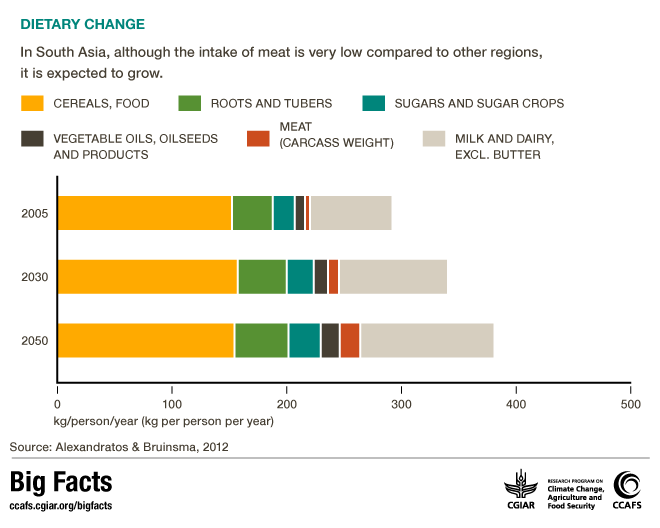
Emissions
Total emissions from agriculture and the food supply chain are largely dependent on diets and the composition of the supply chain. In many low- and middle-income countries, the brunt of emissions and waste takes place at early stages of the chain; on farms, in production, and in storage and transportation, mostly due to a lack of infrastructure. Comparatively very little is lost in the latter parts of the chain; in processing, cooling, retail and cooking.
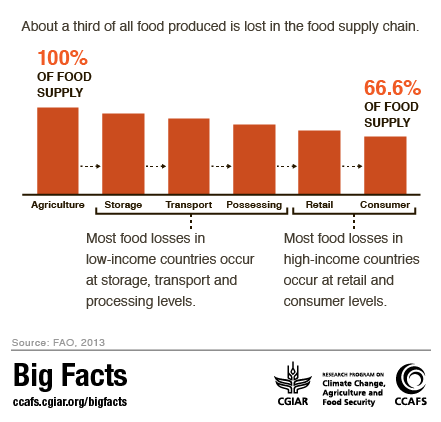 However, with changing diets and infrastructure, it must be expected that more emissions will occur in later stages as more energy will be needed to cool, store, process and transport food. What’s more, more energy will be required and more emissions created, if diets shift to consume more animal products over grain.
However, with changing diets and infrastructure, it must be expected that more emissions will occur in later stages as more energy will be needed to cool, store, process and transport food. What’s more, more energy will be required and more emissions created, if diets shift to consume more animal products over grain.
Impacts on People
Climate change and related weather-events will no doubt have an impact on the population of South Asia. The Intergovernmental Panel on Climate Change (IPCC) predicts that heavy precipitation events will increase substantially (IPCC, 2012). Because of these heavy precipitation events, and because of the predicted rising sea levels, coastal areas, especially the heavily populated megadelta regions around Bangladesh, will be at great risk to increased flooding from the sea and/or flooding from the rivers (IPCC, 2007).
 Water availability, especially for the population relying on glacial meltwater, has been a point of discussion in recent years. The most recent research indicates that because of increasing temperatures, the melt rate will increase, at least until 2050. This, combined with the predicted increase in precipitation, means that water availability in the region is not likely to decline during this century (Immerzeel et al. 2013).
Water availability, especially for the population relying on glacial meltwater, has been a point of discussion in recent years. The most recent research indicates that because of increasing temperatures, the melt rate will increase, at least until 2050. This, combined with the predicted increase in precipitation, means that water availability in the region is not likely to decline during this century (Immerzeel et al. 2013).
Impacts on crops
Climate change, specifically the change in temperature and precipitation patterns, will have an impact on crop production. Areas that were previously suitable to one crop might no longer be able to grow that crop. New crops better adapted to the new conditions will need to be introduced. Running simulations on future climate, scientists at CIAT, the International Center for Tropical Agriculture (CIAT, 2013) found that the Southern and Eastern parts of the region will experience a loss in suitability for bean production, while the northern areas will experience a gain. For cassava, the northern regions will experience a loss in suitability, while the suitability will remain the same or increase in all other areas of the region.
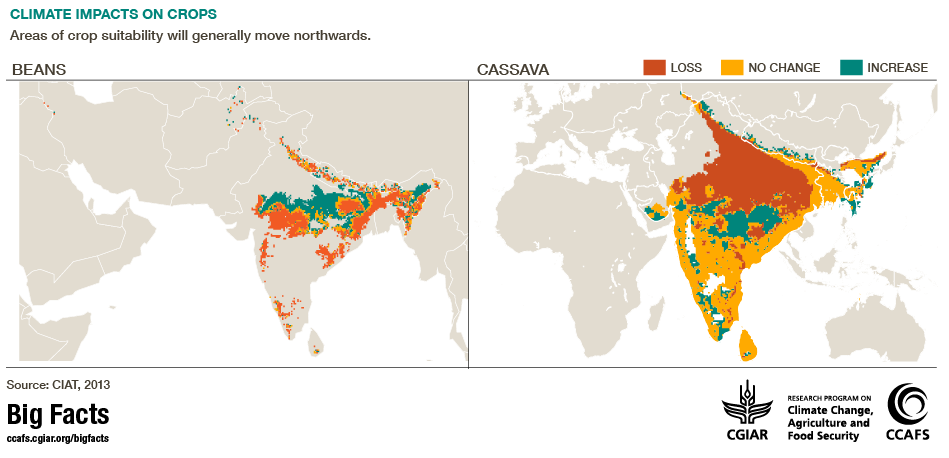
Adaptation
Adapting to higher temperatures and changing rainfall patterns will be key for improving food security in the region. Adaptive measures to deal with higher temperatures might include crop diversification and the introduction of stress-tolerant varieties, implementing water-conserving agriculture, or exploring options for agroforestry. To deal with erratic rainfall, accessible and reliable seasonal weather forecasts will be needed, crop diversification and insurance systems must be introduced and crops tolerant to submergence should be planted (Oxfam, 2011).
Realising the need to prioritise climate-smart agriculture at different scales, CCAFS in South Asia is developing a decision-support toolkit on climate-smart agriculture for policymakers that can substantially increase their ability to make better decisions, even under existing and future climate uncertainties. To increase access to weather forecasts, CCAFS is working with CIMMYT in Karnal, Haryana and Vaishali, Bihar in developing and testing agro-met mobile advisories that are tailored to suit local needs. And in India, Integrated Agrometeorological Advisory Services (IAAS) now reach 3.0 million farmers in India, largely by mobile phone, and the target is to increase to 10 million by the end of this year.
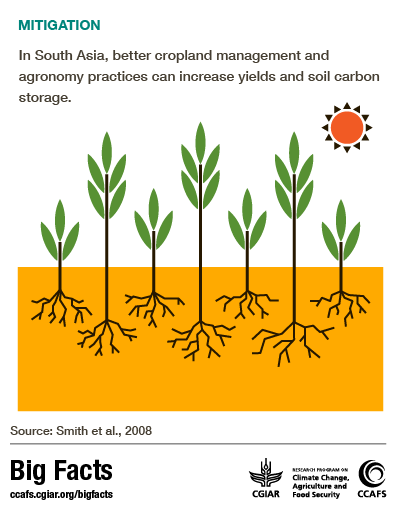
Mitigation
In South Asia, some of the most important mitigation options involve cropland management and agronomy. These include practices such as using improved crop varieties to increase yields, extending crop rotations and avoiding or reducing use of bare, unplanted fallow.
However, very limited information is currently available on baseline emissions from different cropping regimes in South Asia. Actual measurements of greenhouse gas emissions from various cropping systems and current management practices, including climate-smart agricultural practices, need to be made for the development of mitigation strategies in agriculture. CCAFS in South Asia is working on estimating and comparing baseline greenhouse gas emissions by comparing experimental sites to conventional farmer’s plots in order to compare emissions
HAVE YOUR SAY
As is probably clear from the above, the impacts from climate change on various aspects of food production will be numerous. Because of the inherent uncertainties of climate change, even our best predictions of those future changes are more or less uncertain. With Big Facts, we have tried to collect the best, most scientifically thorough and up-to-date research in various areas. I encourage you to explore the data on the Food Impacts Production page of theBig Facts website, and to consult the various references if you would like to know more. Should you have any comments on any of the findings, these are more than welcome.
We invite you to browse the facts; compare the various regions to each other or narrow down on a specific topic, the options are numerous. If you have any questions or comments, feel free to post these below or send an email.
Now you can get all the Big Facts on the links between climate change, agriculture and food security at ccafs.cgiar.org/bigfacts2014. The new site features over 100 stunning infographics that illustrate the most up-to-date, thoroughly researched information on these topics.
Big Facts is also an open-access resource. You can download and share the graphics with your friends and colleagues and use them in your presentations and reports. Please do not hesitate to send us any suggestions for improvements, either by commenting below or sending us an email.
This story is part of a series focusing on the Big Facts on various topics and in different regions; join the conversation at ccafs.cgiar.org/blog and on twitter using #bigfacts

